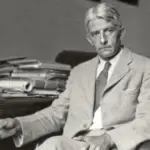One of the most important schools of Psychology in the history of this science is the Würzburg School
In this article we will carry out a historical review to better understand how this meeting place between important psychologists emerged and what their most important contributions were to the advancement of the discipline.
What is the Würzburg School?
Throughout the history of Psychology, different movements have emerged that have promoted the development of different currents and methodologies, enriching this young science. One of the most famous is the Würzburg School, so named because it was born at the University of Würzburg itself, in Germany. Its journey covers the end of the 19th century and the beginning of the 20th.
Which could be considered as The founder of the Würzburg School would be Oswald Külpe, who was a student of Wilhelm Wundt himself, the father of experimental psychology, as he created what was the first laboratory for the studies of this discipline. Külpe continued Wundt’s work and gave form to the experimental methodology, crystallizing what would eventually become the Würzburg School.
However, although Külpe and Wundt began by sharing a line of thought and the use of experimental methodology, they would end up distancing themselves, since Oswald Külpe began to differ on several issues with respect to his mentor. For example, he was not convinced by the concept of psychic causality, nor by the separation that Wilhelm Wundt established between psychic phenomena of a higher type and those of a lower type.
Finally, he also did not agree with some assessments about mental content, since Külpe argued that they do not necessarily always have to be representational and conscious since part of his work is dedicated to trying to demonstrate that many times said content does not meet these characteristics.
All these discrepancies made Külpe finally separate his line of work from that of his former teacher, laying the foundations for the creation of the Würzburg School, to which different researchers gradually joined, enriching it with their ideas and work. this new place of psychological knowledge.
Theoretical and experimental proposals
These are the main contributions of the Würzburg School to the world of early research in Psychology.
introspection
In contrast to Wundt, who we have already seen advocated the study of higher processes, Külpe and the Würzburg school opt for study thinking through experimental introspection For this reason, a large part of the methodology of this school relies on self-reports, extensive questionnaires where the subjects who participate in the studies have to express the thoughts they have had throughout the test carried out.
These self-reports must be applied after the task, so that the subject has time to reflect in depth about it and in this way gather and capture rich information that will be very useful to researchers.
Wundt, on the other hand, collected the information while carrying out the task, so he did not give rise to that subsequent reflection, which is key for correct processing by the volunteers. This is the key to the beginning of what would be the introspective method.
Thought without images
The Würzburg School also saw the birth of other interesting concepts, such as thinking without images Külpe stated that there must be objective thought, independent of the images themselves, that is, a person could recognize a stimulus without necessarily evoking the image of said element. To begin testing this theory, he experimented with a group of volunteers, proposing them to visualize a series of colors while they were in conditions of total darkness.
Külpe had many philosophical influences in his training, and that pushed him to continue studying the theory of thought without images, since He was sure that certain elements of thought, the most basic mental processes, do not involve any images, contrary to what Wundt proposed, who stated that thought could not exist without images. To prove his thesis, the Würzburg School used the introspective method we have seen before.
Abstraction
Continuing with the line of new concepts studied in the Würzburg School, we arrive at abstraction, another of the valuable contributions of this group of authors. Is about a phenomenon of thought by which an individual focuses his attention on specific elements in such a way that all the others are ignored, as if they did not exist.
One of the most famous experiments that Oswald Külpe used to demonstrate the existence of the abstraction process was to make a series of subjects visualize different stimuli, including letters, numbers, figures and colors, but asking them to focus on only one of them (the that the researcher proposed in each test). In each trial, the participants could remember the details of the proposed stimuli, but not the rest, so they were effectively abstracting from them.
Besides, If the range of stimuli to be observed was expanded, the awareness of each specific stimulus progressively decreased which allowed him to conclude that the energy that we can allocate to the attentional process has a limit, and the more elements that are involved, the less performance we will have towards each of them individually, since attention is being divided between all of them.
Thinking vs thought
Another of the distinctions made in the Würzburg School is between the act of thinking and the thoughts themselves, in such a way that on the one hand we have the mental processes, which would be functions or acts, and on the other hand there would be the thoughts. , which would be the contents, associated, yes, with mental images.
For Külpe, thought processes are not susceptible to conscious analysis, and also present great instability. The only way to know them, therefore, is once the event that triggered them has passed, through the subject’s introspection, through the self-reports that we had already mentioned previously. On the opposite side would be thoughts, which are stable and describable.
Mental sets
Further experiments conducted at the Würzburg School allowed the authors to continue reaching interesting conclusions within the study of human thought. In this case, they discovered that, in contrast to theories about associationism, In reality, what the subjects used to relate concepts were mental sets
To do this, they asked the participants, when shown a series of concepts, to think of a category that could relate them, and they always tended to group them under a higher category, instead of associating them through an equivalent concept. For example, when shown a bird, they were more likely to use the category of animal rather than say a specific species of bird.
critics
Wundt, Külpe’s former teacher, was one of the most critical authors of some of the contributions of the Würzburg School. For example, regarding the introspective process, Wundt argued that it was really difficult for the subject to be able to carry out the thought processes required for the task and at the same time reflect on said processes in order to capture them in the self-report, since both exercises require total attention from the individual. Thus concludes that these investigations that give rise to the concepts of thinking without images should not be considered valid
Furthermore, another important author, Titchener, also a follower of Wundt, joins him in this conclusion, as he agrees with his criticism and considers that we cannot speak of thought without images in such cases.
Another important criticism that Wilhelm Wundt makes about the Würzburg School has to do with the methodology used, and Wundt assures that in the experiments carried out at said school no measures are being taken to ensure correct experimental control. There was no way to replicate the experiments, since the processes were unique for each subject and each specific trial, which did not allow for repetition, which greatly limits the scope of their conclusions.
Wundt explains that in the experimental process proposed by the Würzburg School, the observer, instead of being the research psychologist, is the subject of the experiment himself, who is also affected by a task that he does not expect (he does not know what is happening to him). they are going to ask), which is already biasing the observation of thought processes.
Summary
Although the Würzburg School received some criticism from Wundt and other authors more supportive of other experimental currents, it is undeniable that This institution carried out important studies that contributed to the advancement and growth of Psychology promoting the progressive growth of this science and laying the foundations for new currents that arrived in the coming years, making it a key school for the evolution of our discipline.









